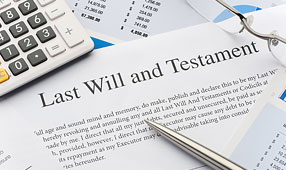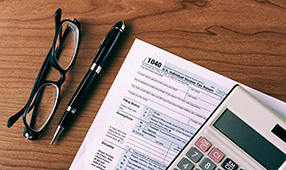Key takeaways
- Your retirement income may come from several sources, and tax liabilities for each might range from taxable to tax-free.
- Withdrawals from pre-tax retirement accounts are taxable as regular income. Qualified withdrawals from Roth accounts are tax-free.*
- Withdrawing money from several accounts may be a smart tax strategy depending on your income level and tax bracket.
During your working years, your income keeps rising (hopefully!) as you build up seniority. Tax strategies are generally focused on trying to minimize taxes owed each year. But heading into retirement, your income levels off, or maybe goes down, and may come from multiple sources—some taxable, some not. This makes your tax strategies a little more complicated.
Know your three main tax buckets
Aside from a home mortgage, contributions to a tax-deferred retirement plan, like a 403(b) plan or a traditional IRA can be a great way to lower your tax bill. But smart savers and planners also think about the future and how retirement savings will be taxed when it’s withdrawn to supplement pension income.
There are three primary tax buckets for your retirement savings:
- Pre-tax 403(b) accounts and traditional IRAs. Money invested in these accounts lowers your taxable income and reduces current taxes. You owe taxes when you withdraw the money in retirement. State pensions fall into this bucket as well. Generally, pension benefits are subject to federal and possibly state taxes when received.
- After-tax Roth 403(b) or Roth IRA accounts. Money put into these accounts has already been taxed, so it grows tax-free and qualified withdrawals in retirement are also free from federal taxes, and possibly from state taxes, as well.
- Taxable investments. This bucket includes bank CDs, money market accounts and brokerage accounts holding mutual funds, stocks and bonds. You must pay taxes every year on any investment earnings in these accounts, regardless of whether you’re working or retired. But you may be able to take certain qualified dividends or long-term capital gains without owing taxes or at tax rates lower than your ordinary tax rate.
Balance your buckets
If you have money invested in all three buckets, or even in two of the three, you have more flexibility to create a smart retirement tax strategy.
- Income and tax rates. Your tax rate is driven by your income. Basically, the higher your income, the higher your tax bracket and the more taxes you will owe. You may have some control over your pension income level by deciding when to start pension benefits, and, if eligible, Social Security benefits. Generally, the longer you wait to take these benefits, the higher they will be each month.
- When and where to withdraw. Withdrawals from your pre-tax accounts count as ordinary taxable income. Qualified withdrawals from Roth accounts are tax-free. And long-term capital gains from brokerage accounts are generally taxed at a low 15% rate regardless of your regular income tax bracket. If you need to keep your income below a certain threshold to avoid getting bumped into a higher tax bracket, consider taking more tax-free withdrawals from your Roth IRA.
If you find yourself in a lower tax bracket in retirement, you may benefit from withdrawing money from taxable accounts first so your tax-deferred savings in a 403(b) plan or IRA can continue to grow. Since qualified Roth withdrawals are tax-free, Roth money doesn’t affect your tax bracket. You may benefit from leaving your Roth savings alone, allowing it to grow tax-free, if you can get sufficient income from other accounts. Unlike pre-tax accounts, you aren’t required to start withdrawals from Roth accounts when you reach a certain age. If it turns out you don’t need Roth withdrawals for retirement income, you can leave your Roth accounts to your heirs.
Every situation is unique
Tax rules are quite complex. Deciding how much to withdraw from which account at various times during retirement may require the help of a CPA or financial planner. Consider the money you spend hiring a professional to help sort out your retirement tax strategies an investment that may save you a lot in lower taxes for years to come.
*To take qualified tax-free withdrawals from a Roth account, your money must have been invested in the account for at least five years and you must be age 59 ½ or older.












